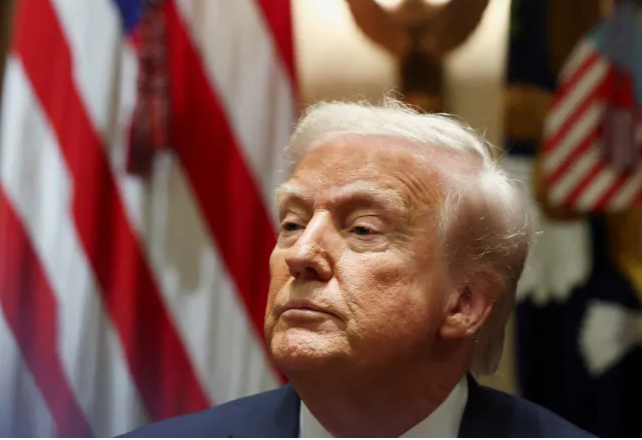
In a stunning revelation, leaked conversations among top Trump administration officials have exposed detailed plans for U.S. airstrikes on Iran-backed Houthi forces in Yemen. These conversations, conducted on the encrypted messaging app Signal and mistakenly shared with a journalist, have ignited global discussions about operational security, U.S. military strategy, and the political fallout of the leaks.
The leaked screenshots, published by The Atlantic on March 27, offer a rare glimpse into the inner workings of high-level decision-making within the Trump administration. The chats reveal discussions about operational timelines, target strategies, and potential geopolitical implications of the strikes.
Details of the Leaked Chats
The conversations reportedly took place in a Signal group titled “Houthi PC small group,” created to coordinate airstrike operations. National Security Advisor Mike Waltz, Defense Secretary Pete Hegseth, Vice President JD Vance, and other top officials were members of this group. According to the screenshots, Waltz accidentally added The Atlantic’s editor-in-chief Jeffrey Goldberg to the chat, leading to the unintentional exposure of sensitive plans.
Key Points From the Chat:
- Operational Timelines: The discussions outlined specific times for launching F-18 strike packages and MQ-9 drones, emphasizing a coordinated timeline to maximize the operation’s impact.
- Target Identification: Officials mentioned positive identification of key Houthi leaders and strategized on targeting critical infrastructure used by the group.
- Geopolitical Concerns: The chats highlighted concerns over international trade routes, including the Bab-el-Mandeb Strait, and the risk of rising oil prices if the operation disrupted global shipping lanes.
One significant exchange included Waltz’s comment about European naval capabilities, stating, “Whether it’s now or several weeks from now, it will have to be the United States that reopens these shipping lanes.”
Strategic Context of the Airstrikes
The leaked conversations shed light on the broader strategic considerations driving the Trump administration’s decision to target the Houthis:
- Restoring Freedom of Navigation: The Bab-el-Mandeb Strait is a critical chokepoint for global trade. Ensuring its security is a top U.S. priority.
- Countering Iranian Influence: The Houthis, backed by Iran, represent a significant threat to U.S. allies in the region, including Saudi Arabia and Israel.
- Reestablishing Deterrence: According to Defense Secretary Hegseth, the strikes were intended to “restore american credibility” and counter perceptions of diminished influence under previous administrations.
These motivations, coupled with detailed planning, underscore the complexity of balancing military objectives with broader geopolitical implications.
Fallout From the Leak
The revelation of these plans has triggered widespread reactions:
The accidental sharing of sensitive plans has raised serious questions about the use of commercial apps like Signal for high-level government communications. Critics argue that despite encryption, such platforms are not foolproof and pose risks of unauthorized exposure.
Former CIA Director John Ratcliffe, who participated in the chat, commented on the operational security breach, stating, “From a CIA perspective, additional time would have allowed us to identify better starting points for coverage on Houthi leadership.”
The incident has reignited debates about the Trump administration’s handling of sensitive information. Opponents have criticized the administration for what they describe as a lack of professionalism and accountability in managing national security matters.
- Middle East: Regional actors, including Saudi Arabia and the UAE, have expressed support for the U.S. strikes but voiced concerns about the public nature of the revelations.
- Europe: European allies, cited in the chats as lacking naval capabilities, have refrained from direct comments but are likely to reassess their strategic dependencies on the U.S.
Timeline of Events
- March 11: National Security Advisor Mike Waltz creates the Signal group, inviting key officials to coordinate operations.
- March 13: Preliminary planning discussions occur, including the designation of representatives from various departments.
- March 15: Airstrikes commence, targeting Houthi infrastructure and leadership. The operation is deemed successful, with reports of key targets eliminated.
- March 27: The Atlantic publishes the leaked chats, sparking global debate.
Implications for U.S. Strategy
The leak underscores several critical challenges facing U.S. military and diplomatic strategy:
- Cybersecurity in Government Operations
- The use of Signal for sensitive communications highlights the need for stricter cybersecurity protocols. Experts argue that reliance on commercial apps, even encrypted ones, exposes vulnerabilities.
- Balancing Transparency and Security
- While transparency is a democratic value, leaks of this nature can compromise operational effectiveness and endanger lives.
- Geopolitical Messaging
- The discussions reveal an emphasis on messaging, with officials debating how to justify the strikes to domestic and international audiences. Defense Secretary Hegseth noted, “Messaging is going to be tough no matter what – nobody knows who the Houthis are.”
Lessons Learned
This incident serves as a case study in the complexities of modern governance:
- Operational Preparedness: The leak demonstrates the importance of redundancy and preparedness in sensitive operations.
- Digital Literacy: Government officials must receive comprehensive training on the risks associated with digital communication platforms.
- Strategic Communication: Crafting clear and consistent messaging is essential for maintaining public and international support.
Conclusion
The leaked conversations among Trump administration officials have illuminated both the intricacies of U.S. military strategy and the vulnerabilities of modern communication systems. As debates over the implications of the leak continue, one thing is clear: the intersection of technology, security, and geopolitics will remain a critical challenge for future administrations.

